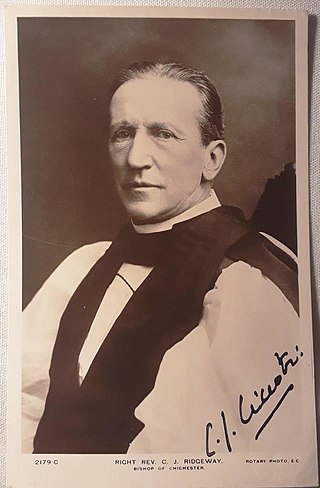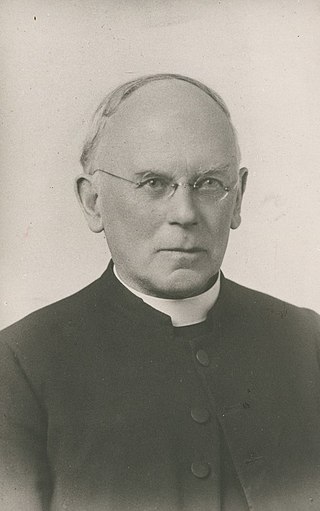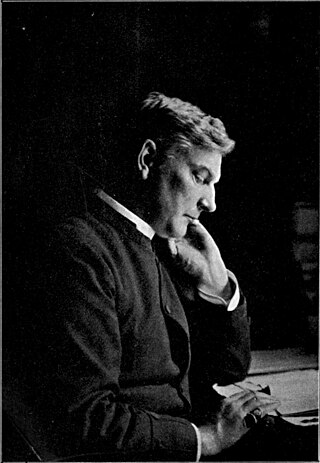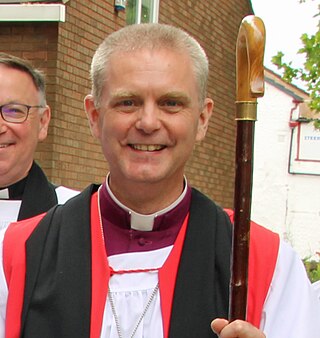
Philip Charles Thurlow Crick (1882-1937) was the Anglican Bishop of Rockhampton [1] in Australia from 1921 until 1927 [2] and the Bishop of Ballarat until 1935.

Philip Charles Thurlow Crick (1882-1937) was the Anglican Bishop of Rockhampton [1] in Australia from 1921 until 1927 [2] and the Bishop of Ballarat until 1935.
Crick was born into a clerical family [3] on 18 November 1882, the eldest child of the Reverend Philip Crick (he took the same name as his father), the founder and first Headmaster (1883-1909) of St Ronan's School.
PCT Crick’s clerical relations included the Rev’d Thomas Crick (great grandfather), the Rev’d Henry William Crick (grandfather), the Rev’d Philip Crick (father), the Rev’d Frederick William Crick (uncle), and the Rev’d John Henry Crick (uncle). His only brother, Douglas Crick, was also ordained, and eventually became the Bishop of Chester. [4]
He was educated at St Ronan’s, his father’s own school, which was then located at Worthing in Sussex. Aged 12 he won scholarships to both Harrow School and Winchester College, taking up the latter place. Later he won a scholarship to Pembroke College, Cambridge, where he took the top rank in the 1904 Cambridge Classical Tripos. [4] At 6 feet 3 inches, he was a good footballer and tennis player. [5]
His first ministry position was as a curate at St Mary's Church, Barnsley after which he was appointed Fellow [6] and then Dean of Clare College, Cambridge. [7] He became an Army Chaplain with the Territorial Force in 1913, was in France on active service from 1915 to 1919, and ended the Great War as Deputy Assistant Chaplain-General to VI Corps. [8] From 1917, he had special responsibility for the Tank chaplains. [9]
In 1921 Crick became one of the earliest First World War chaplains to be appointed to a bishopric, in the Diocese of Rockhampton in Australia. During his time as bishop he founded St Peter's Boys School in Barcaldine, and St Faith's Girls School in Yeppoon. [4]
While in England in 1935, senior staff in his diocese of Ballarat wrote to the Archbishop of Canterbury requesting Crick’s removal from his post. Archbishop Lang sympathised with Crick but, for practical reasons, they decided that Crick should resign, and Lang arranged for Crick's appointment as Assistant Bishop of Derby. [10] However, Crick died suddenly in 1937, and is buried at St Mary's, Funtington, West Sussex. [11]
Crick was a Freemason under the jurisdiction of the United Grand Lodge of England. [12] It is an interest he shared with his brother and fellow-bishop Douglas Crick. [13] : 69
The Bishop of Derby is the Ordinary of the Church of England Diocese of Derby in the Province of Canterbury.
George Merrick Long, was an Anglican bishop and educationist who served as a brigadier general in the Australian Imperial Force during the First World War. He was also involved in the establishment of Trinity Grammar School in Melbourne, where he became headmaster. He was father of the historian Gavin Long.
Robert Wilmer Woods,, known as Robin Woods, was an English Anglican bishop. He was the Bishop of Worcester from 1971 to 1982. He previously served as Archdeacon of Sheffield from 1958 to 1962, and as Dean of Windsor from 1962 to 1970.

Charles Owen Leaver Riley was the first Anglican Archbishop of Perth, Western Australia.
Gerald Alexander Ellison was an Anglican bishop and rower. He was the Bishop of Chester from 1955 to 1973 and the Bishop of London from 1973 to 1981.
Sir Frank Woods KBE ChStJ was an English-born Anglican bishop. From 1957 to 1977, he served as Archbishop of Melbourne. He was additionally the Primate of Australia between 1971 and 1977.

Henry Luke Paget (1853−1937) was the 4th Anglican Bishop of Stepney from 1909 until 1919 when he was appointed Bishop of Chester.
Douglas Henry Crick (1885-1973) was the Anglican Bishop of Chester from 1939 until 1955.
Kenneth Riches was an Anglican bishop during the second half of the 20th century. He served as the bishop of Dorchester from 1952 to 1957, and as the Bishop of Lincoln from 1957 to 1974. He was also the principal of Cuddesdon College, an Anglo-Catholic theological college, between 1945 and 1952.

Thomas Stevens FSA was an Anglican bishop, the first Bishop of Barking.

Charles John Ridgeway was an English churchman, the Bishop of Chichester from 1908 to 1919.

John Reginald Harmer was a long-serving Anglican bishop who served in two dioceses.
Irven David Edwards was an Anglican priest in the mid 20th century.
James Wentworth Leigh was an Anglican priest in the last decade of the 19th century and the first two of the 20th. He was a very active Freemason, an enthusiastic temperance campaigner, and an ardent social reformer.
John Hazlewood SSC was the seventh Anglican Bishop of Ballarat from 1975 to 1993.

William Macdonald Sinclair (1850–1917) was an eminent Anglican priest and author in the late 19th and early 20th centuries.

Richard Lewis was the Anglican Bishop of Llandaff in Wales from 1883 to 1905.

William Lang Paige Cox was Archdeacon of Chester from 1914 until his death in 1934.
Andrew Tremlett is a British Church of England priest. Since 2022, he has served as Dean of St Paul's, and is therefore the head of the Chapter of St Paul's Cathedral and the most senior priest in the Diocese of London. Previously, he was a canon residentiary of Bristol Cathedral (2008–2010), a canon residentiary of Westminster Abbey (2010–2016) and Dean of Durham (2016–2022).

Mark Simon Austin Tanner is a British Anglican bishop and academic. Since 2020, he has been the Bishop of Chester; he previously served as Bishop of Berwick, a suffragan bishop in the Diocese of Newcastle since his 2016 consecration as bishop; and from August 2011 until his consecration, he was the Warden of Cranmer Hall, Durham, a Church of England theological college.